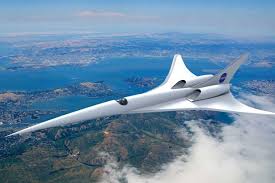In a bid to give wings to its vision of eco-friendly aircrafts, NASA is all set to launch a set of five research projects.
These projects are aimed at shrinking fuel use, reducing aviation’s impact on the environment and quieting noise around airports.
A part of the NASA's Transformative Aeronautics Concepts Program, these 5 research projects were taken from a sequence of pitches made to the TACP staff, Startup Battlefield model.
The main factor which is stopping electric aircraft from taking off, so to speak, boils down to the lack of energy; even the best batteries can’t store nearly as much power as an equivalent volume of jet fuel.
The aircrafts may be made lighter and their propulsion more efficient, but ultimately the batteries themselves need to get better.
One of the projects will be based on Lithium-Air "breathing batteries” which uses oxygen as the active electron carrier, taking it in when they’re being discharged and expelling it when charging.
Li-Air batteries could theoretically achieve fossil fuel-like energy density, but could face some serious technical challenges.
Replacing the battery with a fuel cell is also one of the options and with this they will be looking into the possibility of a super-efficient cell that would combine oxygen from the air with the hydrogen from jet fuel to produce electricity, then use the exhaust to drive a turbine.
In this way, still there will be the use of fossil fuels but by extracting more energy from them and doing it in a much cleaner way.
The electric engine being driven by that energy could also be more efficient; 3D printing is also the solution. The new additive manufacturing techniques will let smaller, more power-dense motors to make them lighter.
NASA is looking into the possibility of using adjustable winglets that can serve as stabilizers during take-off and landing, but flatten out for better aerodynamics during flight. This would reduce the need for a large tail fin, so the plane could be both lighter and present a lower profile.
The fifth isn’t quite green, but it’s still interesting. Unmanned aerial vehicles currently need to be operated within radio line of sight; satellite tracking would be better, but the antennas required are bulky. More investigations are still being carried on.
TACP manager, Doug Rohn, in the news release, told that NASA doesn’t expect all or even any of the projects to bear fruit — “Is failure an option? It depends on your definition of failure.”

